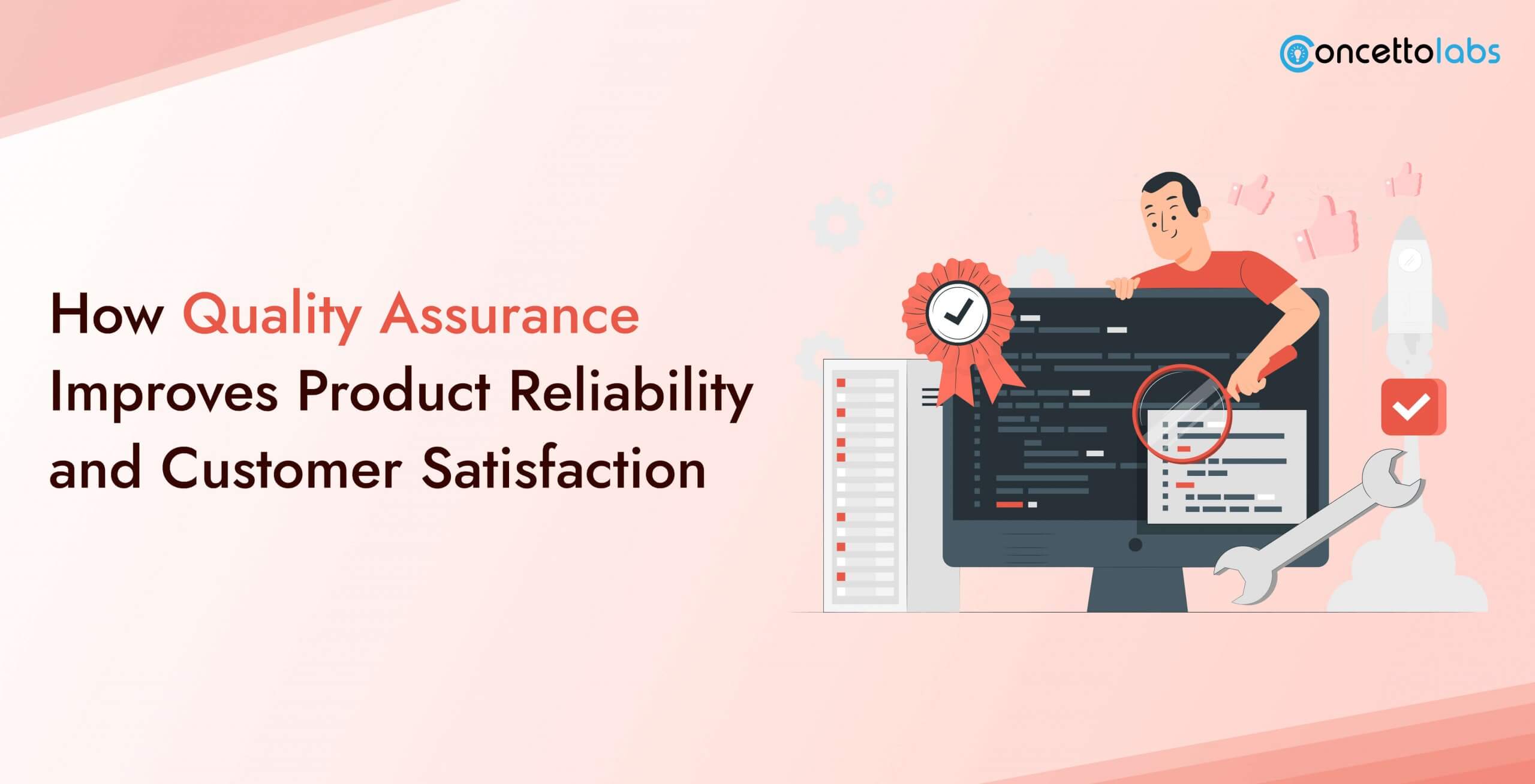
Summary: With so much competition around, ensuring that the product on the market is delivered to the intended customers has become important. QA is extremely important and holds the ability to influence not only product quality but consumer satisfaction as well. This blog post focuses on the need for QA and discusses how it improves product quality, increases customer satisfaction, and drives business success. From the most important approaches to practical recommendations, we will analyze different aspects of software quality assurance and its impact on organizations and their customers.
Given the highly saturated and competitive markets where customers possess way too many choices, the principles of product reliability and customer satisfaction have emerged as the two key success factors. Even a single failure in meeting quality expectations can lead to loss of customers and a switching off of the brand. This is where software quality assurance shines.
Through continued institutionalization of quality management assessment, QA assures that business organizations can deliver on client expectations comprehensively. This not only results in higher reliability of the product on the market but also increases customer satisfaction – a key factor for long-term results.
However, how does quality assurance enhance the reliability of the products and customer satisfaction? This blog will address how QA works in today’s business environments, how it improves dependability, and the ways in which it helps to address customer needs. On the way, we will discuss what QA is, the types of approaches, the advantages and difficulties of utilizing efficient QA tools, and more.
Understanding Product Reliability & Customer Satisfaction
Product reliability means the ability of the product to function as it is designed to do for a given amount of time without developing a fault. A reliable product in addition to working correctly provides the necessary results, including extreme conditions. Such dependable products are crucial to sustaining customer confidence, managing high return rates, and handling complaints under warranty.
On the other hand, customer satisfaction can be described as the client’s appreciation of the extent to which the service given has met or even surpassed his/her expectations. This covers the quality of the product mite as well as the total time from the moment a product is bought, the usage period, and the period after which the customer looks up for a repeat of the same product or service. On the other hand, customer satisfaction at a high level will lead to repeat business, customer loyalty, and word recommendation.
Thus, when the businesses are oriented towards both the dependability of the product and the satisfaction of the consumers, businesses forge good fundamentals for the future. QA continues to be centrally positioned in the achievement of this balance since every product that goes to the customer has to meet certain established quality standards.
How Quality Assurance Can be Used to Improve Reliability?
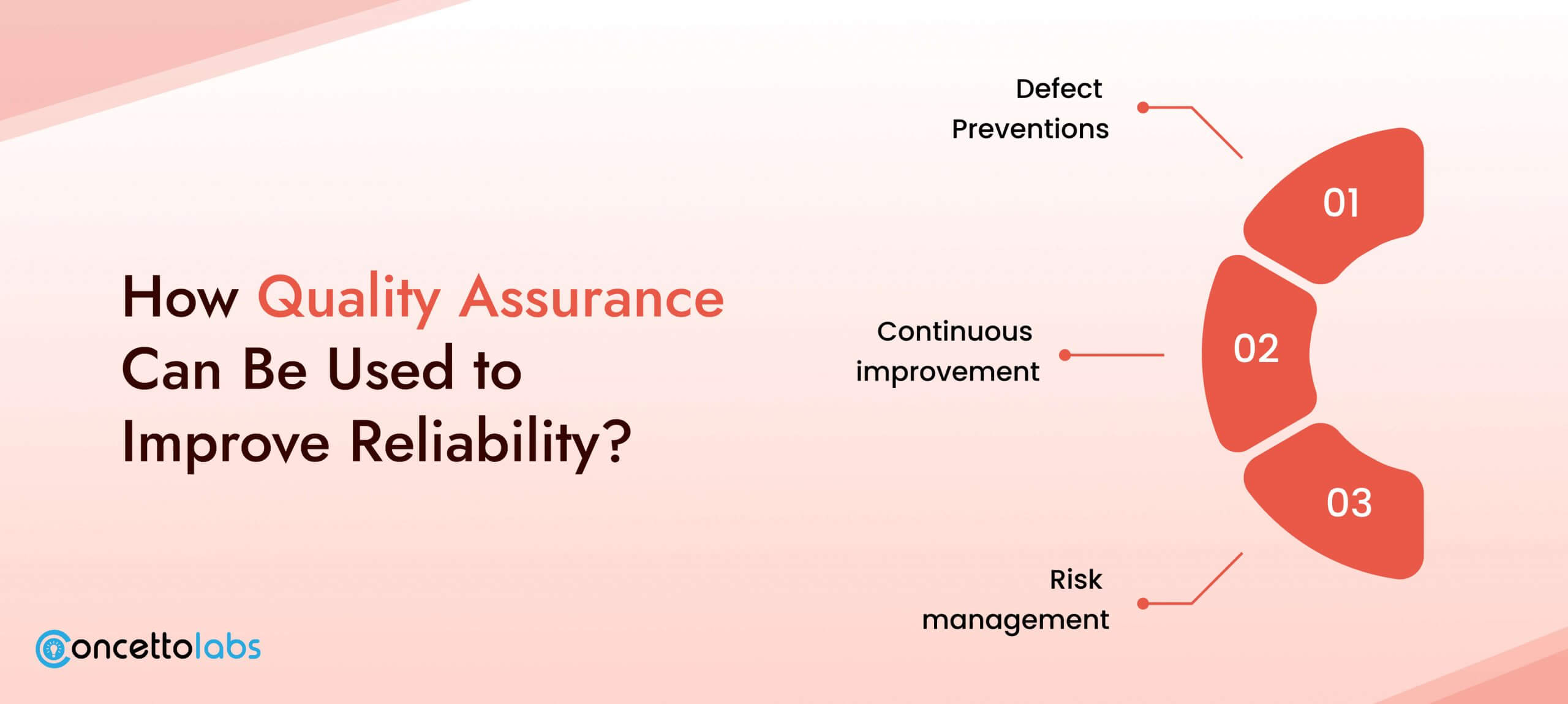
Quality assurance and quality control are two important ways of working in collaboration to specify and guarantee the reliability of a product. While quality control is aimed at detecting and handling of defective products after undergoing its production process, QA usually sets out standards and controls that should not be such that allow production of a defective product.
Here’s how quality assurance improves product reliability?
- Defect Preventions: QA means the usage of procedures which aid in reduction of errors and defects in the manufacturing process. It means that QA helps to detect crucial problems that can prevent the product from functioning properly as soon as it appears in the hands of a consumer.
- Continuous improvement: It is however important to point out that there is no such thing as ‘one-stop’ QA, instead QA is all about the constant and uninterrupted process of checking and testing, of constantly reducing the defects in a product. In this way, QA ensures reliability although it becomes constant only after numerous feedbacks and corrective actions.
- Risk management: QA comprises a significant contribution in the establishment of preventive measures that may hamper the reliability of a product. If one categorizes factors that can cause failure, then the QA team can actually plan how to counter these problems without compromising the product and forcing it to break down or even recall.
It may be noted that because of its ability to emphasize on prevention and, hence, perfection in this context, QA is a significant steward in guaranteeing the reliability of a product as well as its fitness for performance in terms of both internal and customer-specified expectation.
How QA Adds Value to Customer Satisfaction?
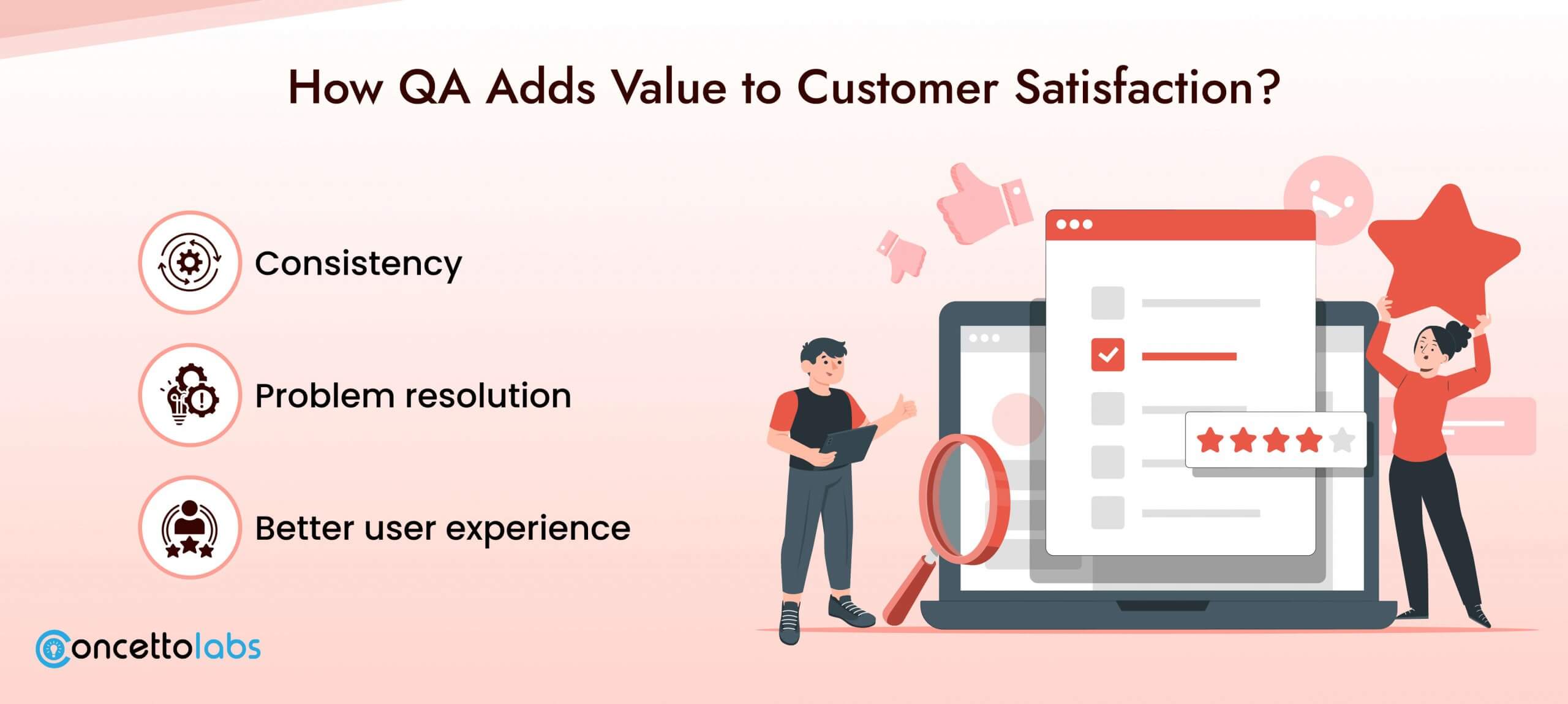
Customer satisfaction can therefore be expressed in terms of the acceptable or desired level of quality of product or service offered. Quality assurance specialists help ensure that those items to be produced will meet lay-down standards or even exceed the standards of the customers.
Here’s how QA contributes to customer satisfaction?
- Consistency: QA makes certain products have a similar quality, which is beneficial in customers gaining confidence in the company’s products. The satisfaction of customers also improves when they receive a product that carries out a task as often as promised.
- Problem resolution: Appropriate QA measures help organizations identify the potentially concerning factors related to their products to avoid them being purchased by consumers. Such an approach has multiple benefits next to improving product quality and reinforcing the company’s image, which helps customers find a satisfactory solution to their problem more quickly and easily.
- Better user experience: A proper functioning of the product, which gives a customer what he or she expected, translates to improved satisfaction. Satisfied customers will remain loyal customers and hence, customer loyalty is achieved hence there is an increase.
MajorQA Techniques for Enhancing Product Quality
Depending on the industry and the type of product some basic types of QA methodologies exist; however, there are some effective methodologies to improve the reliability of the product.
Here are some of the most common:
- Six Sigma: A system that tries to achieve a reduction in the level of defects and improve in the quality by using some analytical tools. From the specific case of application, Six Sigma assists in enhancing reliability by eradicating variabilities in delivery processes.
- Agile Testing: A popular method used in software development, Agile testing means testing from the time the development process starts until the product is done. It assists to detect and correct problems earlier than later hence resulting in refined software products.
- Automated Testing: Testing applications usually involves performing a large number of tests repeatedly, usually in software and electronics areas, and automated testing provides a fast and sophisticated solution to this particular problem.
- Root Cause Analysis (RCA): This way of working allows one to find the causes of defects or failures and obtain information on how they may be eradicated. RCA’s implementation also helps in enhancing the reliability of a product due to the issues of repetition.
QA Best Practices that can lead to High Customer Satisfaction.
Thus businesses have to ensure that the best QA practices keep customer satisfaction at a high level by proactively addressing product and customer experience.
Here are some best practices:
- Customer-centric QA: Customer requirements and customer expectations are the most important factors needed in order to be able to produce a product that will make the customers satisfied. It must be noted that QA teams should strive to embrace information from customers and achieve changes on their products, when possible.
- User Acceptance Testing (UAT): When planning to release a product, the process of conducting UAT helps to identify whether the product will meet the expectations of the real users. It is also important in order to prevent future dissatisfaction after the product launch is complete.
- Regular Audits: The assessments of the quality control procedures and performance of the products can be effectively accomplished through a comparative study which is regularly done in order to achieve excellent measure in relation to the customer’s expectations.
- Training & Certification: The fact that they are fully trained and have the best understanding of the various quality management best practices available in today’s market means that only the best quality results can be delivered.
Benefits of Implementing Quality Assurance
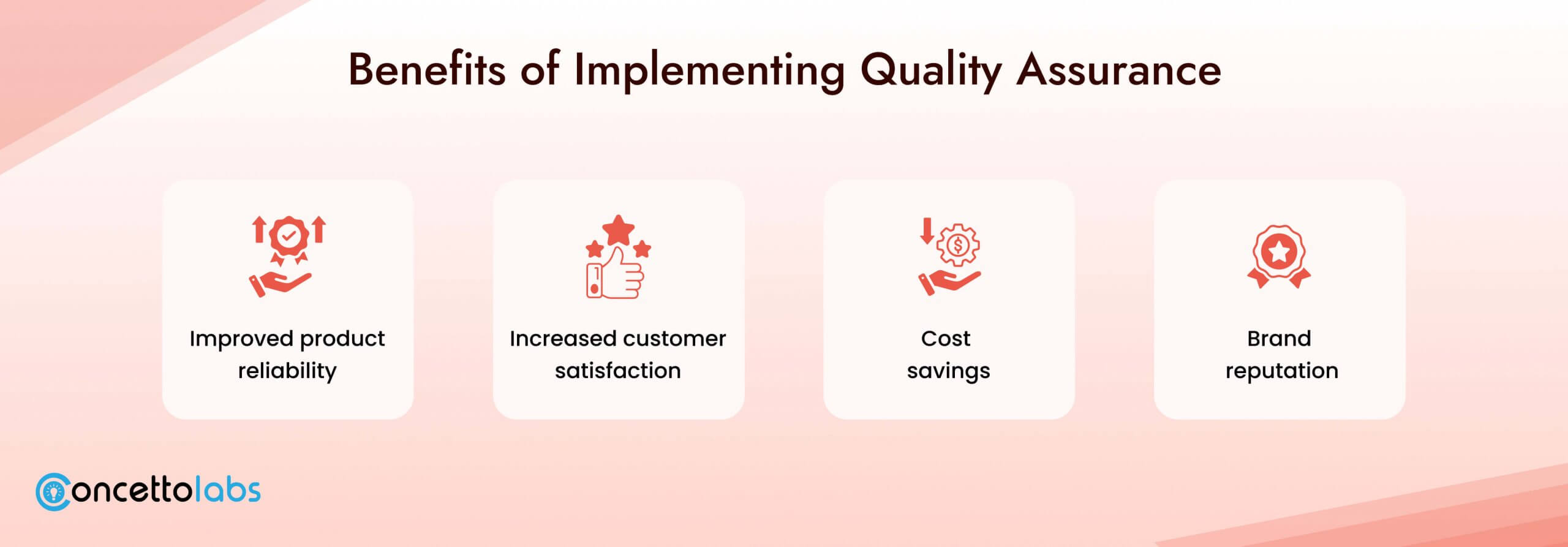
Implementing a robust QA process offers numerous benefits:
- Improved product reliability: Applying proper QA procedures increases the overall reliability of the product and consequently; the general incidence of breakdowns, faults and customer vitriol are minimized.
- Increased customer satisfaction: A manufacturer must always provide quality products to his/her customers in a bid to have constant sales from loyal customers.
- Cost savings: In its turn, skillful introduction of the QA processes could contribute to the reduction of the costs connected with the manufacturing of the bad products or defects, customer returns and warranty claims.
- Brand reputation: The high quality products lead to positive encounters hence affecting the image of the brand which makes it more believable.
Challenges in Implementing Quality Assurance
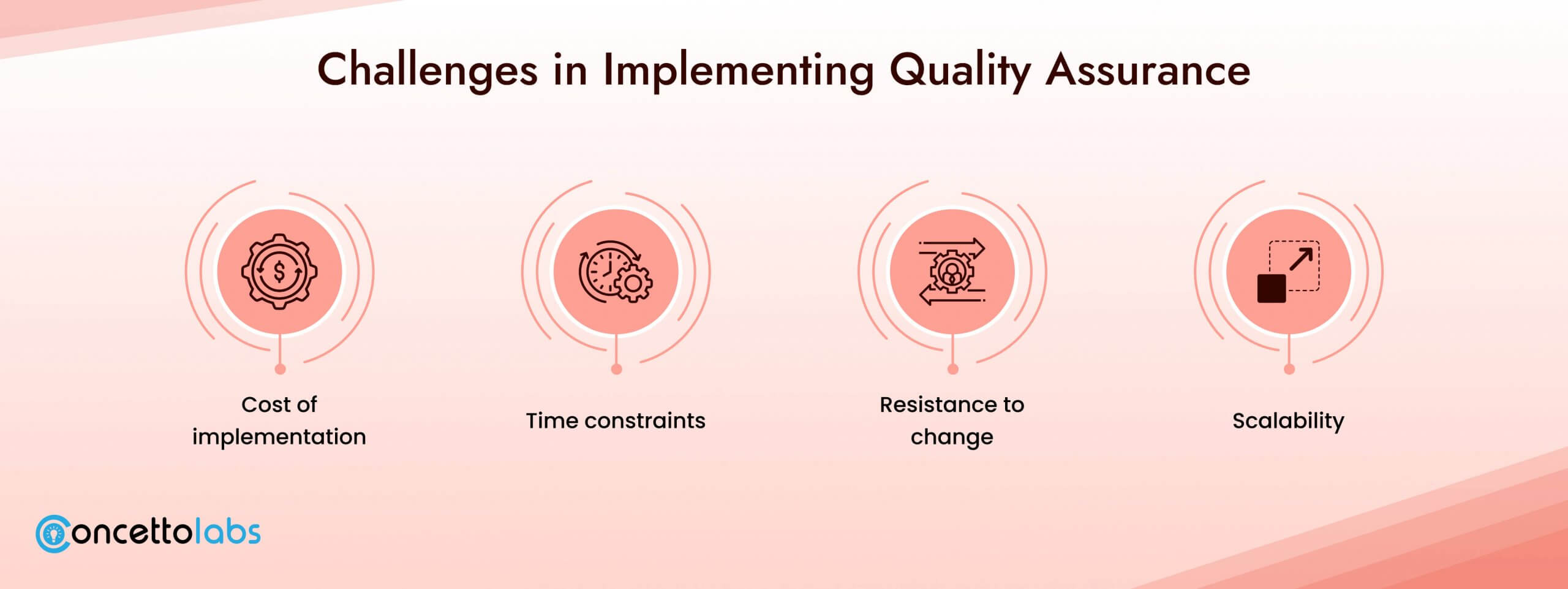
While the benefits of QA are clear, there are challenges that companies often face when implementing QA processes:
- Cost of implementation: The development of an efficient QA system means its dependence on tools and technologies and on professionals.
- Time constraints: Some of the quality assurance activities, for example, proofs and checks are likely to slow down the production process and in essence could slow down product releases.
- Resistance to change: Within organizations, people may not accept the new approach in QA or that new process that is usually changed from the previous one.
- Scalability: As business expands it becomes challenging to maintain the quality of the products you are offering as they increase in number.
Do you Want to Increase the Reliability of Your Product?
Feel free to get in touch with us to find out more how we can support the development of a QA solution that meets your organization’s requirements.
Contact Us Today!
Especially at the present time when competition is steadily increasing, quality assurance emerges as an essential element for enhancing the usability of the product as well as increasing the level of satisfaction among the customer. With avoidance of defects, control of risks, and constant enhancement of goods, QA contributes to the achievement of customer satisfaction and sustainable survival of companies. QA provides a straight path to improvements in products, customer satisfaction, and revenue overall when it’s practiced correctly and integrated with the right strategies.







 Indonesia
Indonesia
 Botswana
Botswana
 USA
USA
 Italy
Italy
 Panama
Panama




 USA
USA UK
UK Saudi Arabia
Saudi Arabia Norway
Norway India
India Australia
Australia